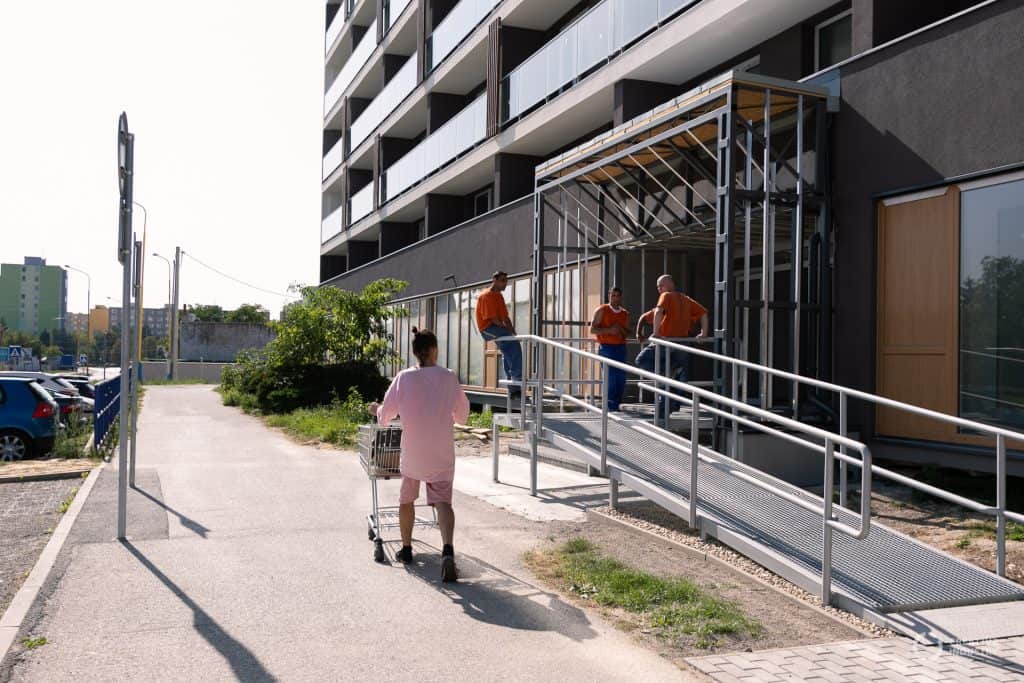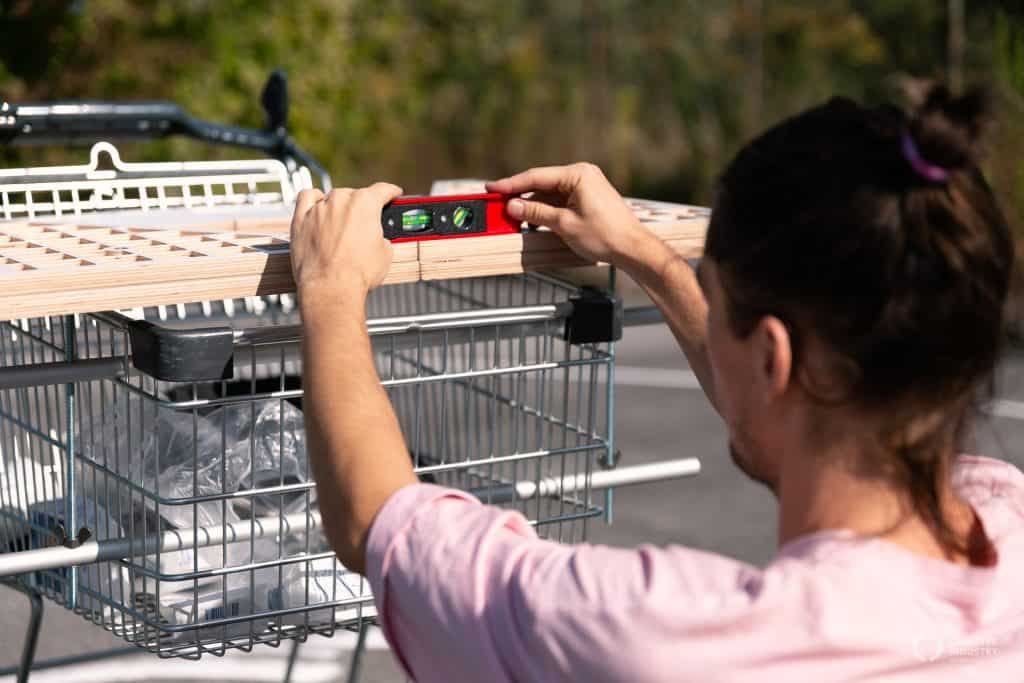You will recognize him by a specially adapted shopping cart, in which he carries some packets of sugar and a carrot juice. He has been mapping abandoned public areas in Košice for three months now giving them a new, temporary look. Meet Juraj Horňák, architect and artist in residence of CIKE.
Juraj Horňák was born in Poprad. He started studying architecture at Brno University of Technology, then continued in Bratislava at the Academy of Fine Arts, and he also tried working in a traditional architectural studio in Stuttgart. That’s when he realized that drawing buildings was not his thing. “I’ve always preferred conceptual architecture. And besides that, I’ve always wanted to work with my hands.“ He was fascinated by unused public space, which he said had amazing potential. “Bratislava, for example, is full of contrasts. In the city center, you can find an abandoned forgotten place side by side with a new development project. I liked imagining what could become of these places. That led me to the original idea of Pink Frame.”
Residency at CIKE gave him freedom
After two years in the capital, he spent three months on an art residency in the New Synagogue in Žilina, and then moved to the East. “I’ve always wanted to get to know Košice. Every city inspires me. For example, here, I’ve found many abandoned pavements that people just seem to have forgotten about.”
He learned about CIKE’s activities at PechaKucha Night Bardejov, where the theme of the Art & Tech Days festival for 2020 – Human Responsibility – caught his attention. “I contacted CIKE and their Director, Michal Hladký. We realized that urban interventions and a creativity in reviving neglected areas are topics that we were both passionate about. People from CIKE gave me the opportunity to live and create in Košice, to focus on my goal without worrying about existential problems. These are the perfect conditions for creative work.”
Architecture doesn’t need to be just about buildings
Architecture is about the city and human responsibility for it, for public space. “We have enough space in the city. I don’t want to create new surfaces. I focus my energy on finding ways to better use the existing ones.”
In Košice, Juraj took his ideas to the next level. “For the first month, I was just getting to know the city. Then came the production phase, during which I designed the improvements for the shopping cart. Not everything worked well on the first try. Every idea needs a phase of prototyping and fine-tuning.”
In only a few minutes and a simple thing like a shopping cart can be turned into a mobile object. You can use it to decorate an empty area, attract and entertain bypassers, inspire them to think and discuss.
Today, Juraj works with three different upgrades of the shopping cart. The pink frame is used to generate ideas for alternative uses of public space. The drawing attachment is a tool for temporary intervention in public space. It has to surprise people, arouse curiosity, and tear them away from the stereotype. The folding picnic table gives people the opportunity to stop, talk, and refresh themselves with carrot juice, for example.
Public space without people
“Right now, we are all living very individually. Most social interactions have moved to the virtual world. I feel that my job is to bring them back.” Juraj is fascinated by the randomness that disappears from public space when people leave it. Therefore, he seeks to create random situations in which authentic experiences can arise, and thus restore relationships between people and public space. He believes that this helps to build a better and safer city. He is aware that he has no competence to restore the abandoned area to its original function. This situation is often caused by unclear property rights. “I’m more interested in what we can do with a place like this while we are stuck. You can make temporary interventions where these rights are not yet settled.”
“I would like for people to change their point of view and look at an empty space with an idea of how it could be used, what could be done there.”
Juraj Horňák
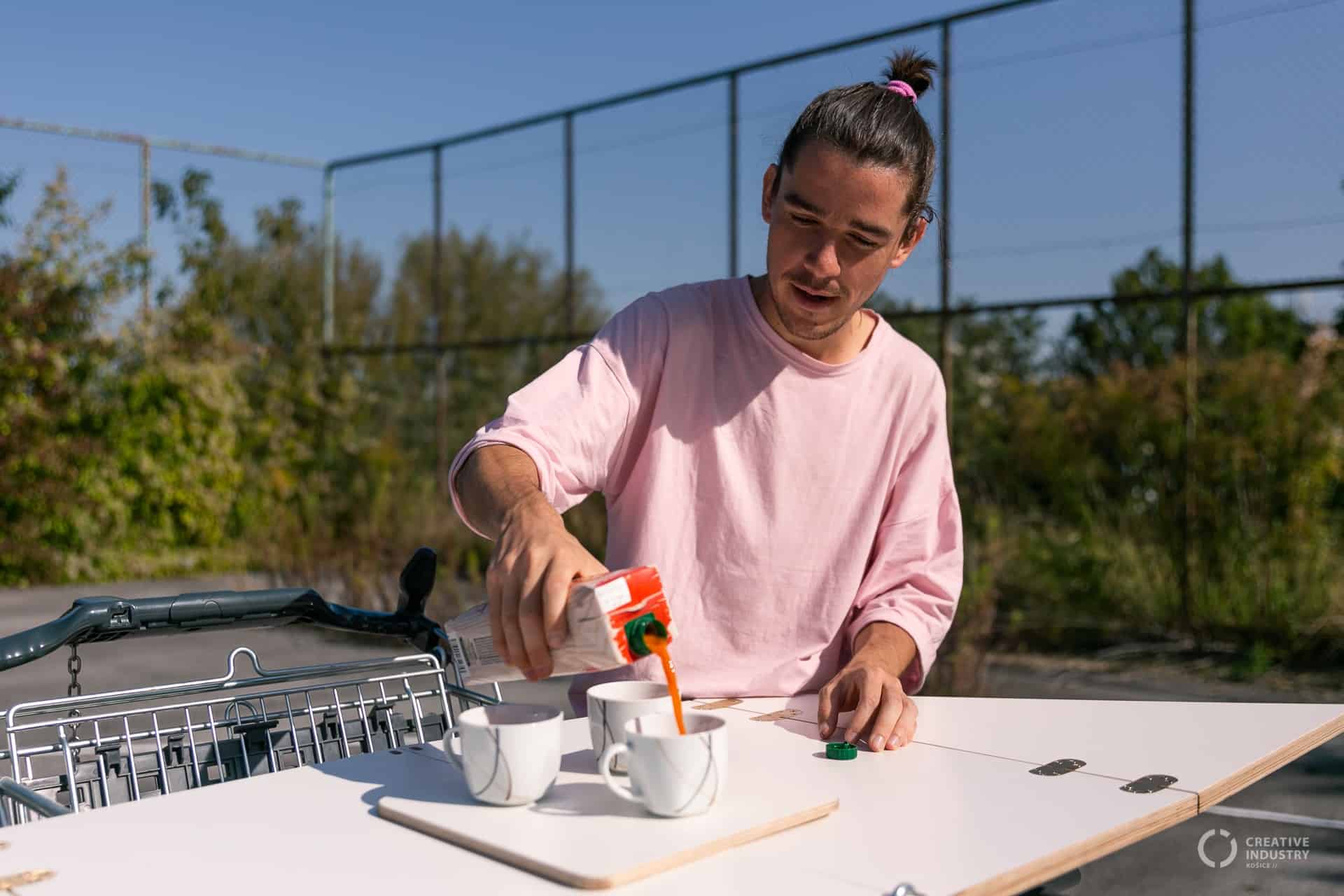
Urban acupuncture
Every abandoned area that Juraj discovers is unique. As well as every sugar drawing he does. Sometimes he draws contours, outlines of cracks in damaged asphalt, sometimes it is a hockey field or a simple mandala. “I like provocative activities on the border of legality. Sticking around and waiting for the city to react. And it reacts.”
Several civic initiatives that deal with participation and improving life in the city from the bottom up have been interested in Juraj’s work. Almost like a healing process in which the city and its people, despite obstacles, can find solutions in the form of a temporary art installation, this is what he shares with CIKE.
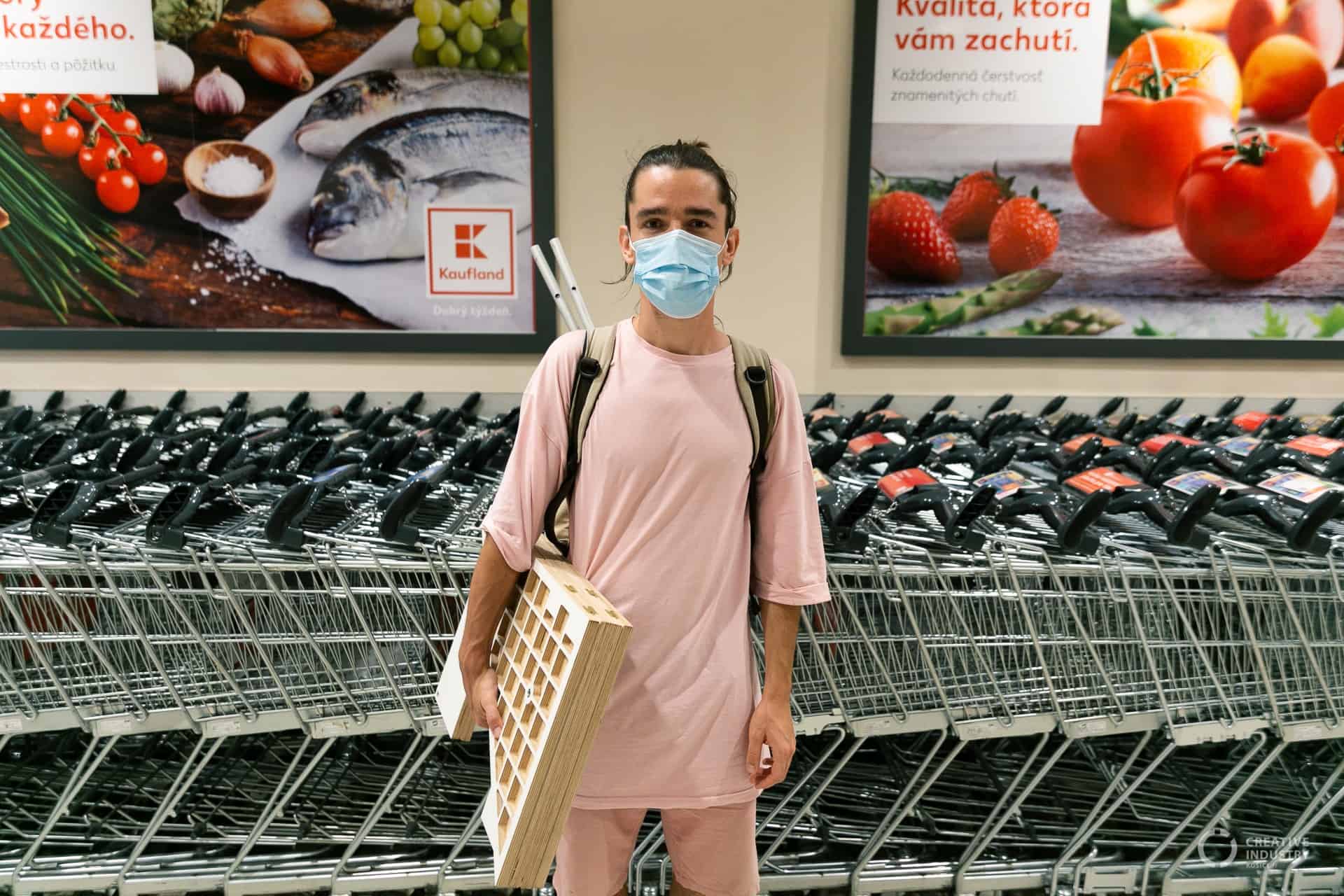
“Sometimes I don’t have to think about the future of my work, but the future finds it on its own. This is what I enjoy the most.”
Juraj Horňák
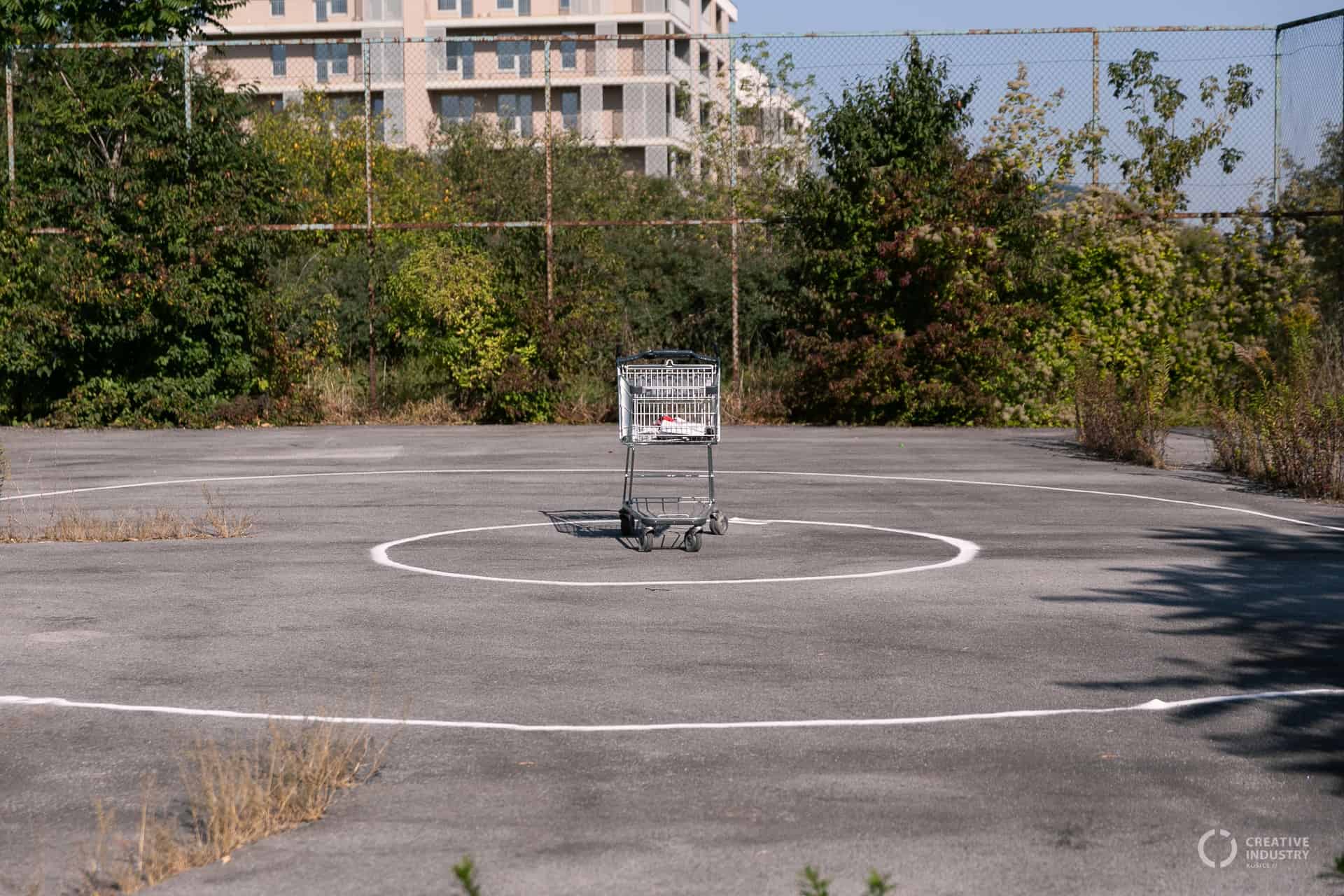
It doesn’t end with a shopping cart
While Juraj is currently focusing on activities in public space, his dream is to gather all these ideas, instructions and prototypes into a catalogue. “You come and simply say: today I want to have a picnic in a public place. You take the book, and follow the instructions. I think that if we showed people how to do things, they would do them.” However, he now concentrates on workshops, which are a source of inspiration for the catalogue. One of them is organized as part of the Urban Exploration events and will take place in front of the Magistrate of Košice. For the festival White Night, which was canceled in its original form and replaced by several smaller installations, Juraj is working on a luminous version of a drawing cart.
Juraj’s art residency at CIKE is coming to an end. What are his future plans? “I will definitely visit Berlin again. My idea to work with public space was born while I was there on a one-year exchange. It is an exceptional city, especially when you think of the sensitivity of people to changes in the urban environment. They are perfectly aware of the negatives of the gentrification processes and bottom-up democracy is very strong there. In Slovakia, we are just at the beginning.”

©MestoCity 
©MestoCity 
©MestoCity
In addition to Juraj’s residency in our organization, we also organized the first round of Home Residencies. Both took place as part of the Cultural and Creative Spaces and Cities project, which aimed to connect citizens with the local government through the preparation of a new cultural strategy, workshops, and various research activities. As the project’s activities were suspended due to the COVID-19 pandemic, we decided to prototype these new forms of support for artists, thanks to which they could continue to work on their projects from the safety of their homes.
The other two projects we supported thematically fit into the project’s goals. Róbert Rampáček wrote the screenplay for a short animated film, which examined the movement of a person in a city that is deserted. Fashion designer Ľudka Žoldáková sophisticatedly merged the majority with the minority in her collection.
The project is co-funded by the Creative Europe Programme of the European Union.
The project was supported by Tatra banka Foundation.


